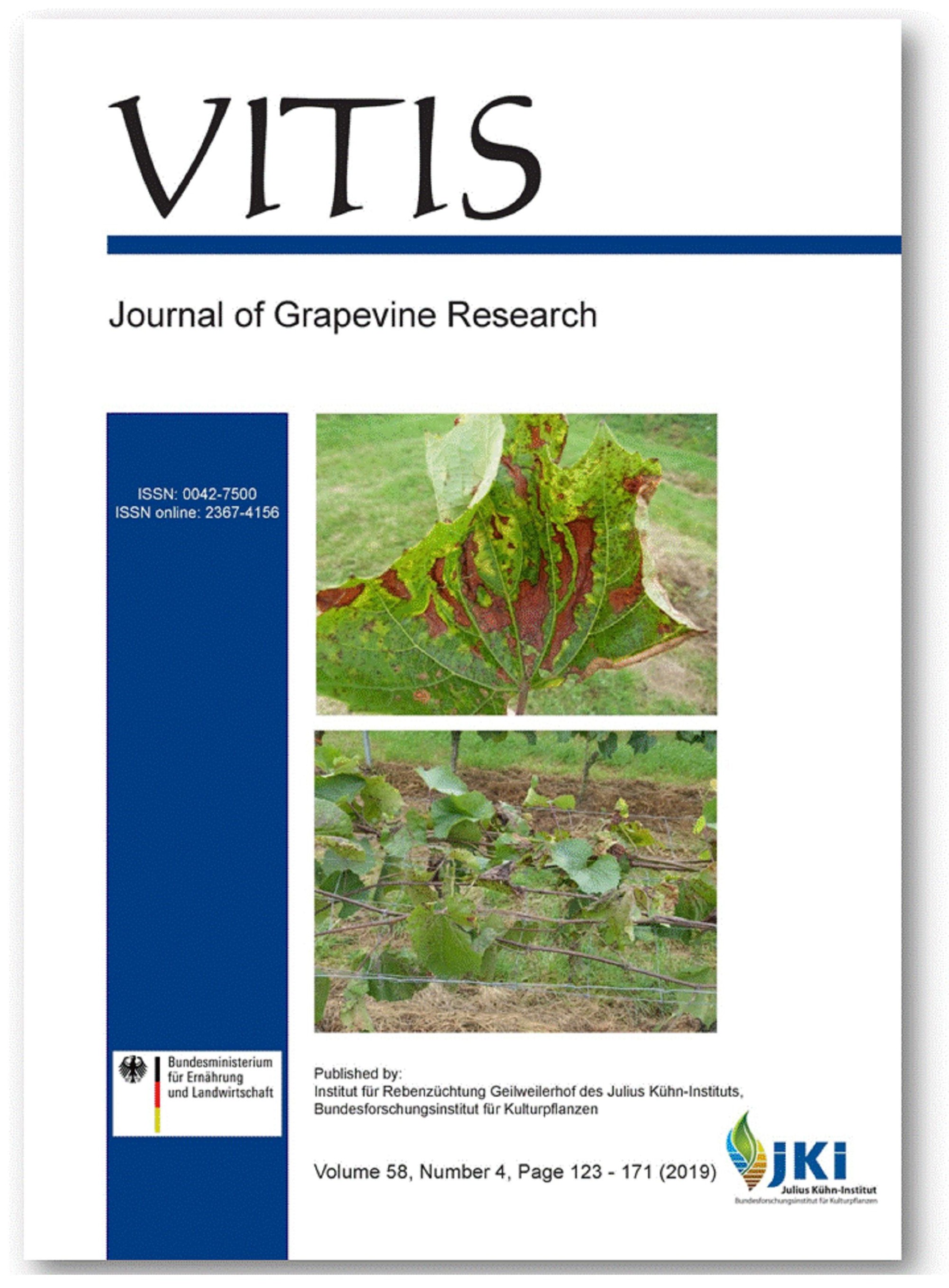Genetic identification, origin and sanitary status of grapevine cultivars (Vitis vinifera L.) grown in Babar, Algeria
DOI:
https://doi.org/10.5073/vitis.2019.58.153-158Keywords:
Algerian grapevine varieties; nuclear microsatellites; synonyms; virus occurrence; Pascale di CagliariAbstract
This research focused on present grapevine biodiversity of neglected cultivars grown in 'Babar' region, Northeastern Algeria. The obtained results demonstrate the complex, rich, and even surprising inheritance of grapevine biodiversity in such a small region, with currently residual viticulture practiced only for direct consumption. Babar is one of the oldest inhabited areas in Algeria and part of the Atlas Mountains, considered very favorable for wild and cultivated vine growing since protohistoric times. Thirty-seven vines from the traditional growing area were analyzed using nuclear microsatellite (SSR) markers for cultivar identification and RT-qPCR analysis for virus detection and sanitary status evaluation. As a result, thirteen different genotypes were found, most of them showing a very good sanitary status, then constituting a valuable biological source for clonal selection. A close relatedness was evidenced with some Mediterranean varieties, resulting from previous exchanges of grapevine cultivars in the past. Furthermore, the present study highlighted the existence of three new genotypes, highly probably autochthonous of Babar region, with proposed names 'Babari', 'Babar-Algeria', and 'Amesski-Babar'. They could represent unique Algerian varieties, probably preserved over time. The conservation of these endangered genotypes is highly recommended.
Downloads
Additional Files
Published
Issue
Section
License
The content of VITIS is published under a Creative Commons Attribution 4.0 license. Any user is free to share and adapt (remix, transform, build upon) the content as long as the original publication is attributed (authors, title, year, journal, issue, pages) and any changes to the original are clearly labeled. We do not prohibit or charge a fee for reuse of published content. The use of general descriptive names, trade names, trademarks, and so forth in any publication herein, even if not specifically indicated, does not imply that these names are not protected by the relevant laws and regulations. The submitting author agrees to these terms on behalf of all co-authors when submitting a manuscript. Please be aware that this license cannot be revoked. All authors retain the copyright on their work and are able to enter into separate, additional contractual arrangements.



